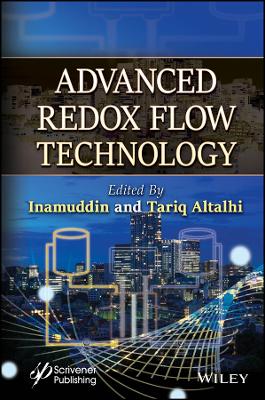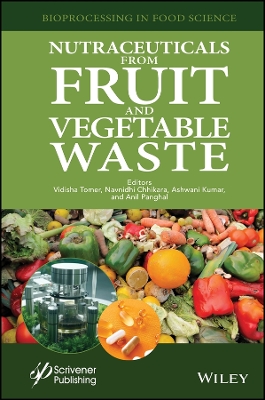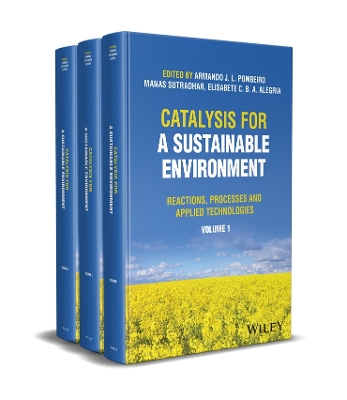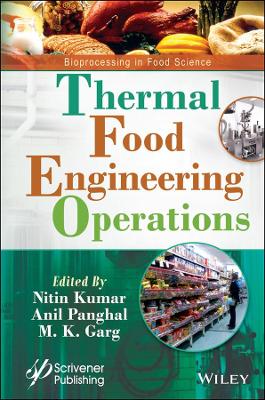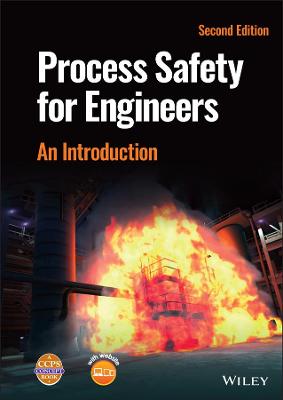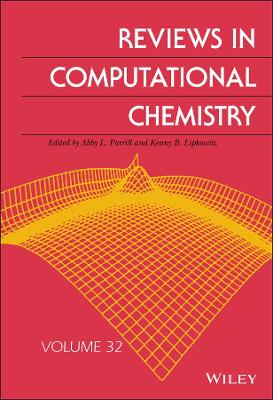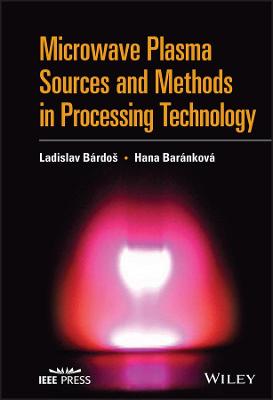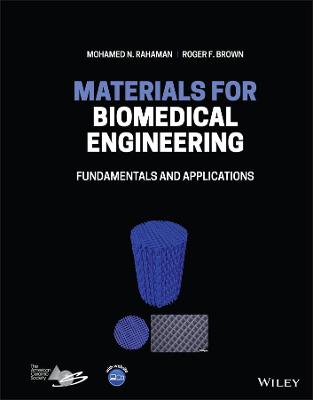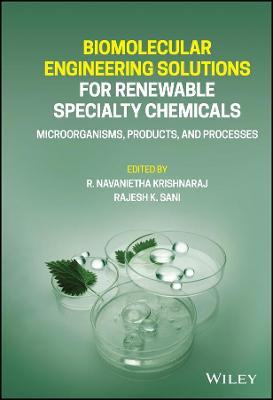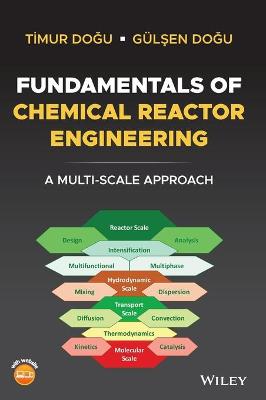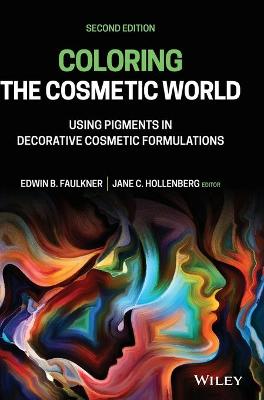Spectroscopy
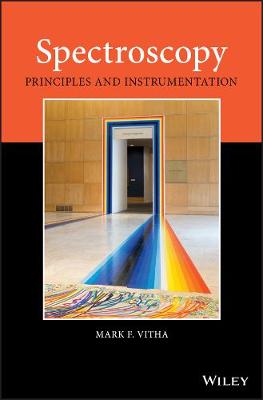 -15%
portes grátis
-15%
portes grátis
Spectroscopy
Principles and Instrumentation
Vitha, Mark F.
John Wiley & Sons Inc
12/2018
336
Dura
Inglês
9781119436645
15 a 20 dias
896
PREFACE xi
1. Fundamentals of Spectroscopy 1
1.1 Properties of Electromagnetic Radiation 1
1.1.1 Speed, c 2
1.1.2 Amplitude, A 2
1.1.3 Frequency, ? 3
1.1.4 Wavelength, ? 3
1.1.5 Energy, E 3
1.1.6 Wavenumber, 6
1.2 The Electromagnetic Spectrum 7
1.2.1 Radio-Frequency Radiation (10?27 to 10?21 J/photon) 8
1.2.2 Microwave Radiation (10?23 to 10?22 J/photon) 10
1.2.3 Infrared Radiation (10?22 to 10?19 J/photon) 11
1.2.4 Ultraviolet and Visible Radiation (10?19 to 10?18 J/photon) 12
1.2.5 X-Ray Radiation (10?15 to 10?13 J/photon) 13
1.2.6 Alpha, Beta, and Gamma Radiation (10?13 to 10?11 J/photon and Higher) 13
1.3 The Perrin-Jablonski Diagram 15
1.3.1 Timescales of Events 18
1.3.2 Summary of Radiative and Nonradiative Processes 19
1.4 Temperature Effects on Ground and Excited State Populations 19
1.5 More Wave Characteristics 21
1.5.1 Adding Waves Together 21
1.5.2 Diffraction 21
1.5.3 Reflection 25
1.5.4 Refraction 28
1.5.5 Scattering 29
1.5.6 Polarized Radiation 31
1.6 Spectroscopy Applications 34
1.7 Summary 34
Problems 34
References 36
Further Reading 38
2. UV-Visible Spectrophotometry 39
2.1 Theory 40
2.1.1 The Absorption Process 40
2.1.2 The Beer-Lambert Law 43
2.1.3 Solvent Effects on Molar Absorptivity and Spectra 49
2.2 UV-Visible Instrumentation 52
2.2.1 Sources of Visible and Ultraviolet Light 54
2.2.2 Wavelength Selection: Filters 58
2.2.3 Wavelength Selection: Monochromators 61
2.2.4 Monochromator Designs: Putting It All Together 75
2.2.5 Detectors 79
2.3 Spectrophotometer Designs 85
2.3.1 Single-Beam Spectrophotometers 85
2.3.2 Scanning Double-Beam Instruments 89
2.3.3 Photodiode Array Instruments 93
2.4 The Practice of Spectrophotometry 98
2.4.1 Types of Samples That Can Be Analyzed 99
2.4.2 Preparation of Calibration Curves 100
2.4.3 Deviations from Beer's Law 103
2.4.4 Precision: Relative Concentration Error 111
2.4.5 The Desirable Absorbance Range 114
2.5 Applications and Techniques 116
2.5.1 Simultaneous Determinations of Multicomponent Systems 116
2.5.2 Difference Spectroscopy 117
2.5.3 Derivative Spectroscopy 118
2.5.4 Titration Curves 119
2.5.5 Turbidimetry and Nephelometry 121
2.6 A Specific Application of UV-Visible Spectroscopy: Enzyme Kinetics 122
2.6.1 Myeloperoxidase, Immune Responses, Heart Attacks,and Enzyme Kinetics 122
2.6.2 Possible Mechanism for Myeloperoxidase Oxidation of LDL via Tyrosyl Radical Intermediates 123
2.7 Summary 127
Problems 127
References 132
Further Reading 134
3. Molecular Luminescence: Fluorescence, Phosphorescence, and Chemiluminescence 135
3.1 Theory 135
3.1.1 Absorbance Compared to Fluorescence 136
3.1.2 Factors That Affect Fluorescence Intensity 141
3.1.3 Quenching 146
3.1.4 Quantum Yield and Fluorescence Intensity 147
3.1.5 Linearity and Nonlinearity of Fluorescence: Quenching and Self-Absorption 149
3.2 Instrumentation 153
3.2.1 Instrument Design 154
3.2.2 Sources 154
3.2.3 Filters and Monochromators 157
3.2.4 Component Arrangement 158
3.2.5 Fluorometers 158
3.2.6 Spectrofluorometers 159
3.2.7 Cells and Slit Widths 164
3.2.8 Detectors 166
3.3 Practice of Luminescence Spectroscopy 167
3.3.1 Considerations and Options 167
3.3.2 Fluorescence Polarization 168
3.3.3 Time-Resolved Fluorescence Spectroscopy 172
3.4 Fluorescence Microscopy 173
3.4.1 Fluorescence Microscopy Resolution 175
3.4.2 Confocal Fluorescence Microscopy 175
3.5 Phosphorescence and Chemiluminescence 177
3.5.1 Phosphorescence 177
3.5.2 Chemiluminescence 177
3.6 Applications of Fluorescence: Biological Systems and DNA Sequencing 179
3.7 Summary 186
Problems 186
References 190
Further Reading 192
4. Infrared Spectroscopy 193
4.1 Theory 193
4.1.1 Bond Vibrations 196
4.1.2 Other Types of Vibrations 198
4.1.3 Modeling Vibrations: Harmonic and Nonharmonic Oscillators 200
4.1.4 The 3N?6 Rule 207
4.2 FTIR Instruments 209
4.2.1 The Michelson Interferometer and Fourier Transform 210
4.2.2 Components of FTIR Instruments: Sources 224
4.2.3 Components of FTIR Instruments: DTGS and MCT Detectors 226
4.2.4 Sample Handling 227
4.2.5 Reflectance Techniques 231
4.3 Applications of IR Spectroscopy, Including Near-IR and Far-IR 234
4.3.1 Structure Determination with Mid-IR Spectroscopy 235
4.3.2 Gas Analysis 235
4.3.3 Near-Infrared Spectroscopy (NIR) 236
4.3.4 Far-Infrared Spectroscopy (FIR) 245
4.4 Summary 248
Problems 248
References 251
Further Reading 254
5. Raman Spectroscopy 255
5.1 Energy-Level Description 255
5.2 Visualization of Raman Data 258
5.3 Molecular Polarizability 259
5.4 Brief Review of Molecular Vibrations 261
5.5 Classical Theory of Raman Scattering 262
5.6 Polarization of Raman Scattering 265
5.6.1 Depolarization Ratio 266
5.7 Instrumentation and Analysis Methods 266
5.7.1 Filter Instruments 267
5.7.2 Dispersive Spectrometers 270
5.7.3 Fourier Transform Raman Spectrometers 271
5.7.4 Confocal Raman Instruments 271
5.7.5 Light Sources 273
5.8 Quantitative Analysis Methods 274
5.8.1 Calibration Curves 274
5.8.2 Curve Fitting 274
5.8.3 Ordinary Least Squares 275
5.8.4 Classical Least Squares 277
5.8.5 Implicit Analytical Methods 277
5.9 Applications 277
5.9.1 Art and Archeology 277
5.9.2 Pharmaceuticals 278
5.9.3 Forensics 279
5.9.4 Medicine and Biology 279
5.10 Signal Enhancement Techniques 282
5.10.1 Resonance Raman Spectroscopy 283
5.10.2 Surface-Enhanced Raman Spectroscopy 283
5.10.3 Nonlinear Raman Spectroscopy 284
5.11 Summary 286
Problems 286
References 288
Further Reading 289
SOLUTIONS 291
INDEX 315
PREFACE xi
1. Fundamentals of Spectroscopy 1
1.1 Properties of Electromagnetic Radiation 1
1.1.1 Speed, c 2
1.1.2 Amplitude, A 2
1.1.3 Frequency, ? 3
1.1.4 Wavelength, ? 3
1.1.5 Energy, E 3
1.1.6 Wavenumber, 6
1.2 The Electromagnetic Spectrum 7
1.2.1 Radio-Frequency Radiation (10?27 to 10?21 J/photon) 8
1.2.2 Microwave Radiation (10?23 to 10?22 J/photon) 10
1.2.3 Infrared Radiation (10?22 to 10?19 J/photon) 11
1.2.4 Ultraviolet and Visible Radiation (10?19 to 10?18 J/photon) 12
1.2.5 X-Ray Radiation (10?15 to 10?13 J/photon) 13
1.2.6 Alpha, Beta, and Gamma Radiation (10?13 to 10?11 J/photon and Higher) 13
1.3 The Perrin-Jablonski Diagram 15
1.3.1 Timescales of Events 18
1.3.2 Summary of Radiative and Nonradiative Processes 19
1.4 Temperature Effects on Ground and Excited State Populations 19
1.5 More Wave Characteristics 21
1.5.1 Adding Waves Together 21
1.5.2 Diffraction 21
1.5.3 Reflection 25
1.5.4 Refraction 28
1.5.5 Scattering 29
1.5.6 Polarized Radiation 31
1.6 Spectroscopy Applications 34
1.7 Summary 34
Problems 34
References 36
Further Reading 38
2. UV-Visible Spectrophotometry 39
2.1 Theory 40
2.1.1 The Absorption Process 40
2.1.2 The Beer-Lambert Law 43
2.1.3 Solvent Effects on Molar Absorptivity and Spectra 49
2.2 UV-Visible Instrumentation 52
2.2.1 Sources of Visible and Ultraviolet Light 54
2.2.2 Wavelength Selection: Filters 58
2.2.3 Wavelength Selection: Monochromators 61
2.2.4 Monochromator Designs: Putting It All Together 75
2.2.5 Detectors 79
2.3 Spectrophotometer Designs 85
2.3.1 Single-Beam Spectrophotometers 85
2.3.2 Scanning Double-Beam Instruments 89
2.3.3 Photodiode Array Instruments 93
2.4 The Practice of Spectrophotometry 98
2.4.1 Types of Samples That Can Be Analyzed 99
2.4.2 Preparation of Calibration Curves 100
2.4.3 Deviations from Beer's Law 103
2.4.4 Precision: Relative Concentration Error 111
2.4.5 The Desirable Absorbance Range 114
2.5 Applications and Techniques 116
2.5.1 Simultaneous Determinations of Multicomponent Systems 116
2.5.2 Difference Spectroscopy 117
2.5.3 Derivative Spectroscopy 118
2.5.4 Titration Curves 119
2.5.5 Turbidimetry and Nephelometry 121
2.6 A Specific Application of UV-Visible Spectroscopy: Enzyme Kinetics 122
2.6.1 Myeloperoxidase, Immune Responses, Heart Attacks,and Enzyme Kinetics 122
2.6.2 Possible Mechanism for Myeloperoxidase Oxidation of LDL via Tyrosyl Radical Intermediates 123
2.7 Summary 127
Problems 127
References 132
Further Reading 134
3. Molecular Luminescence: Fluorescence, Phosphorescence, and Chemiluminescence 135
3.1 Theory 135
3.1.1 Absorbance Compared to Fluorescence 136
3.1.2 Factors That Affect Fluorescence Intensity 141
3.1.3 Quenching 146
3.1.4 Quantum Yield and Fluorescence Intensity 147
3.1.5 Linearity and Nonlinearity of Fluorescence: Quenching and Self-Absorption 149
3.2 Instrumentation 153
3.2.1 Instrument Design 154
3.2.2 Sources 154
3.2.3 Filters and Monochromators 157
3.2.4 Component Arrangement 158
3.2.5 Fluorometers 158
3.2.6 Spectrofluorometers 159
3.2.7 Cells and Slit Widths 164
3.2.8 Detectors 166
3.3 Practice of Luminescence Spectroscopy 167
3.3.1 Considerations and Options 167
3.3.2 Fluorescence Polarization 168
3.3.3 Time-Resolved Fluorescence Spectroscopy 172
3.4 Fluorescence Microscopy 173
3.4.1 Fluorescence Microscopy Resolution 175
3.4.2 Confocal Fluorescence Microscopy 175
3.5 Phosphorescence and Chemiluminescence 177
3.5.1 Phosphorescence 177
3.5.2 Chemiluminescence 177
3.6 Applications of Fluorescence: Biological Systems and DNA Sequencing 179
3.7 Summary 186
Problems 186
References 190
Further Reading 192
4. Infrared Spectroscopy 193
4.1 Theory 193
4.1.1 Bond Vibrations 196
4.1.2 Other Types of Vibrations 198
4.1.3 Modeling Vibrations: Harmonic and Nonharmonic Oscillators 200
4.1.4 The 3N?6 Rule 207
4.2 FTIR Instruments 209
4.2.1 The Michelson Interferometer and Fourier Transform 210
4.2.2 Components of FTIR Instruments: Sources 224
4.2.3 Components of FTIR Instruments: DTGS and MCT Detectors 226
4.2.4 Sample Handling 227
4.2.5 Reflectance Techniques 231
4.3 Applications of IR Spectroscopy, Including Near-IR and Far-IR 234
4.3.1 Structure Determination with Mid-IR Spectroscopy 235
4.3.2 Gas Analysis 235
4.3.3 Near-Infrared Spectroscopy (NIR) 236
4.3.4 Far-Infrared Spectroscopy (FIR) 245
4.4 Summary 248
Problems 248
References 251
Further Reading 254
5. Raman Spectroscopy 255
5.1 Energy-Level Description 255
5.2 Visualization of Raman Data 258
5.3 Molecular Polarizability 259
5.4 Brief Review of Molecular Vibrations 261
5.5 Classical Theory of Raman Scattering 262
5.6 Polarization of Raman Scattering 265
5.6.1 Depolarization Ratio 266
5.7 Instrumentation and Analysis Methods 266
5.7.1 Filter Instruments 267
5.7.2 Dispersive Spectrometers 270
5.7.3 Fourier Transform Raman Spectrometers 271
5.7.4 Confocal Raman Instruments 271
5.7.5 Light Sources 273
5.8 Quantitative Analysis Methods 274
5.8.1 Calibration Curves 274
5.8.2 Curve Fitting 274
5.8.3 Ordinary Least Squares 275
5.8.4 Classical Least Squares 277
5.8.5 Implicit Analytical Methods 277
5.9 Applications 277
5.9.1 Art and Archeology 277
5.9.2 Pharmaceuticals 278
5.9.3 Forensics 279
5.9.4 Medicine and Biology 279
5.10 Signal Enhancement Techniques 282
5.10.1 Resonance Raman Spectroscopy 283
5.10.2 Surface-Enhanced Raman Spectroscopy 283
5.10.3 Nonlinear Raman Spectroscopy 284
5.11 Summary 286
Problems 286
References 288
Further Reading 289
SOLUTIONS 291
INDEX 315

